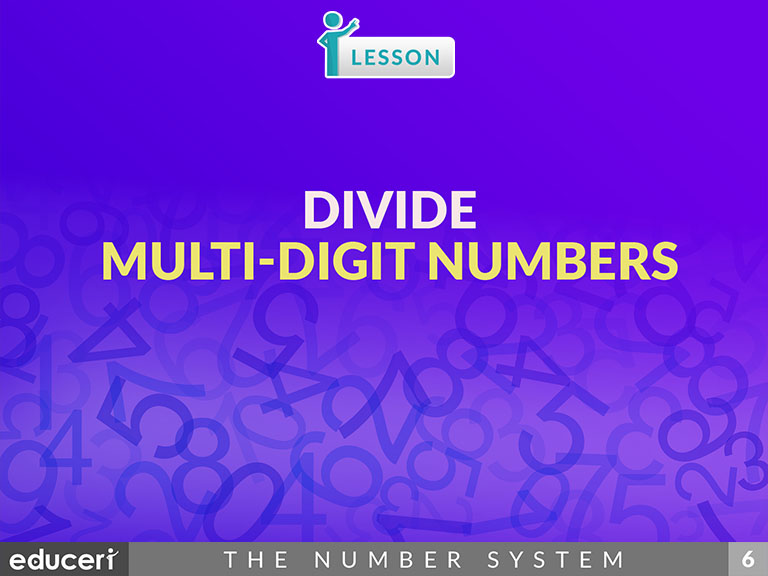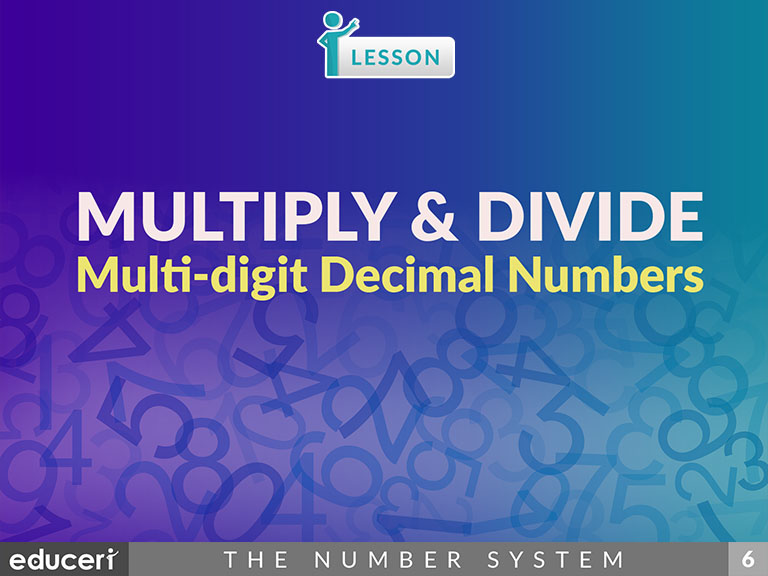All Lessons
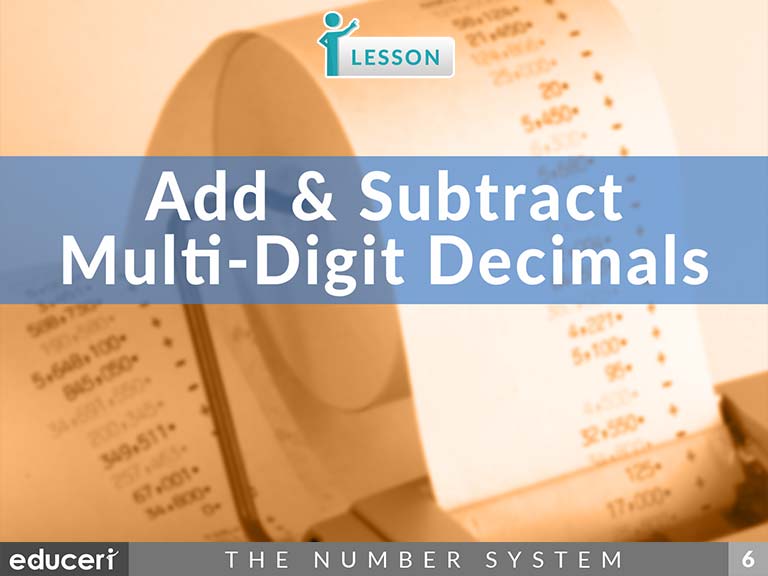
Add & Subtract Multi-Digit Decimals
This number system lesson teaches students how to add and subtract multi-digit decimals. The lesson includes research-based strategies and strategic questions that prepare students for assessments. In this lesson, students will solve multi-digit addition and subtraction problems. The focus of this lesson is correctly arranging problems based on place value before performing the standard algorithms for addition or subtraction. This lesson also includes a variety of real-world examples and word problems for students to complete.
Share This Lesson
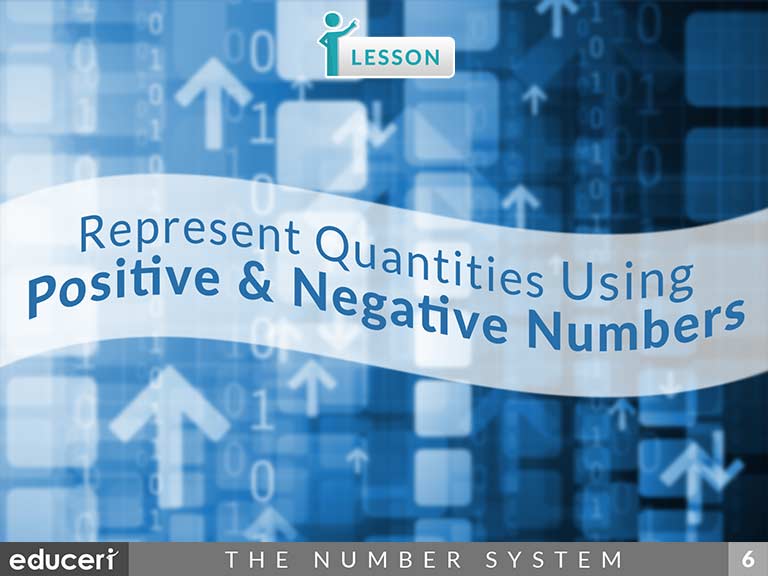
Represent Quantities Using Positive and Negative Numbers
This number system lesson teaches students how to represent quantities using positive and negative numbers. The lesson includes research-based strategies and strategic questions that prepare students for assessments. In this lesson, students expand their knowledge of positive and negative numbers. Students will plot given real-world values on a number line and explain their meaning. This lesson should be taught after lesson 6.NS.6.1 Describe positive and negative numbers.
Share This Lesson
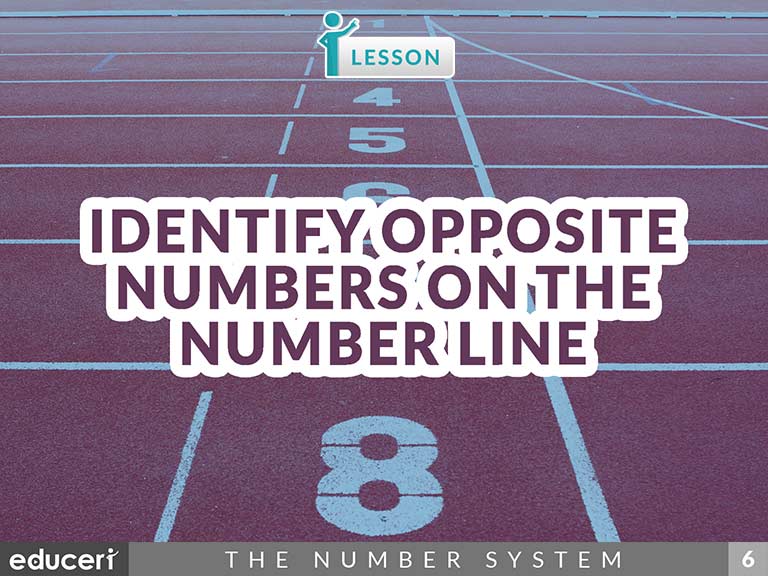
Identify Opposite Numbers on the Number Line
This number system lesson teaches students how to identify opposite numbers on the number line. The lesson includes research-based strategies and strategic questions that prepare students for assessments. In this lesson, students will identify numbers and their opposites on number lines. This is intended to expand upon students’ knowledge of positive and negative numbers.
Share This Lesson
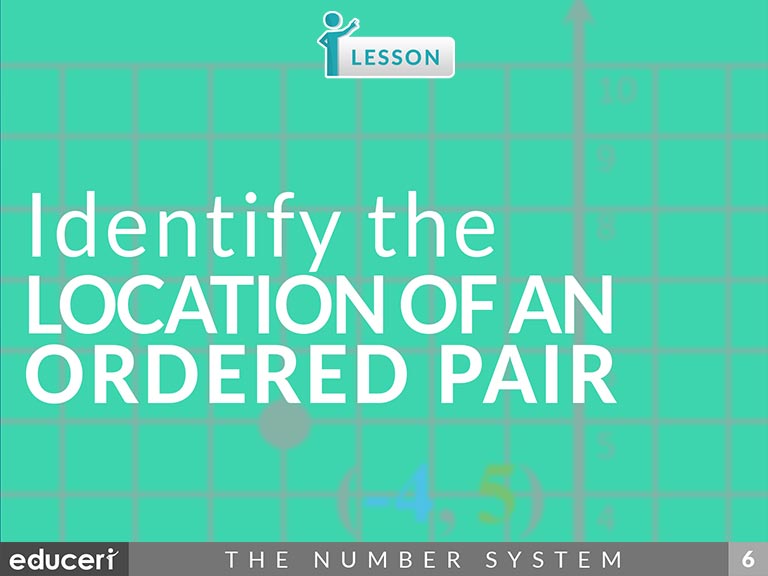
Identify the Location of an Ordered Pair
This number system lesson teaches students how to identify the location of an ordered pair. The lesson includes research-based strategies and strategic questions that prepare students for assessments. In this lesson, students will identify the location of ordered pairs on the coordinate plane. This lesson includes plotting numbers on all four quadrants of the coordinate plane.
Share This Lesson
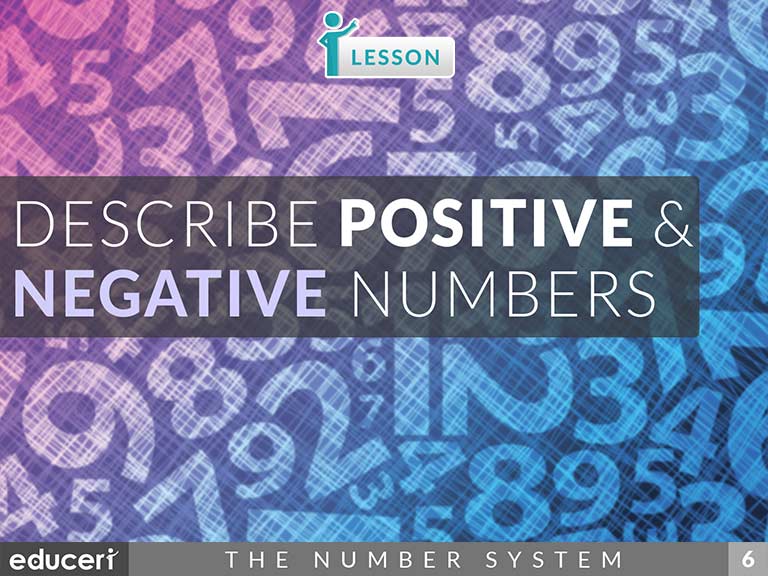
Describe Positive & Negative Numbers
This number system lesson teaches students how to describe positive and negative numbers. The lesson includes research-based strategies and strategic questions that prepare students for assessments. In this lesson, students will be introduced to negative numbers. Students will begin to develop a sense of what negative numbers mean.
Share This Lesson
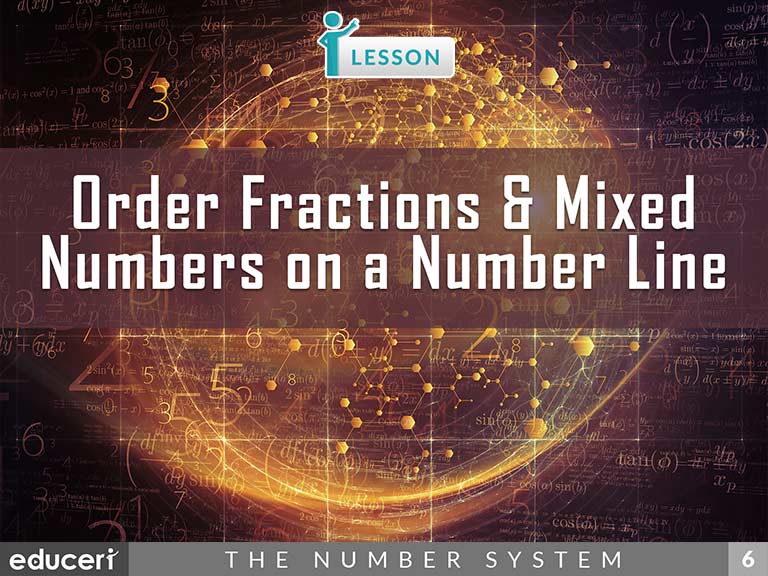
Order Fractions and Mixed Numbers on a Number Line
This number sense lesson focuses on ordering fractions and mixed numbers on a number line. The lesson includes research-based strategies and strategic questions that prepare students for assessments. In this lesson, students place each fraction or mixed number (from a group of four) on the number line one at a time by reading each number aloud, determining the sign and value of the whole number or fraction, and determining the denominator and numerator. Finally, they order the numbers from least to greatest or greatest to least using the number line. In addition to the lesson, there are sixteen pages of Independent Practice and Periodic Reviews with questions modeled after current adaptive testing items.
Share This Lesson
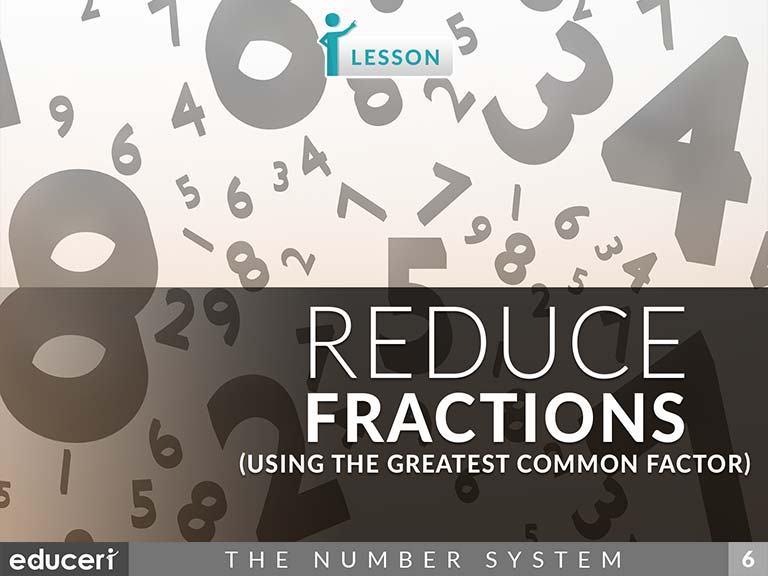
Reduce Fractions (Using the Greatest Common Factor)
This number sense lesson focuses on reducing fractions. The lesson includes research-based strategies and strategic questions that prepare students for assessments. In this lesson, students find the factors of the numerator and denominator. Then, they identify the greatest common factor (GCF) and write it down. Finally, they reduce the fraction by dividing the numerator and denominator by the GCF and interpreting the reduced fraction. In addition to the lesson, there are five pages of Independent Practice and Periodic Reviews with questions modeled after current adaptive testing items and 10 flashcards for reduced fractions.
Share This Lesson

Plot Points on a Coordinate Plane
This geometry lesson covers how to plot an ordered pair on a coordinate plane. The lesson includes research-based strategies and strategic questions that prepare students for assessments. In this lesson, students will learn how to determine the x-coordinate and the y-coordinate, and then plot the coordinates on the grid.
Share This Lesson
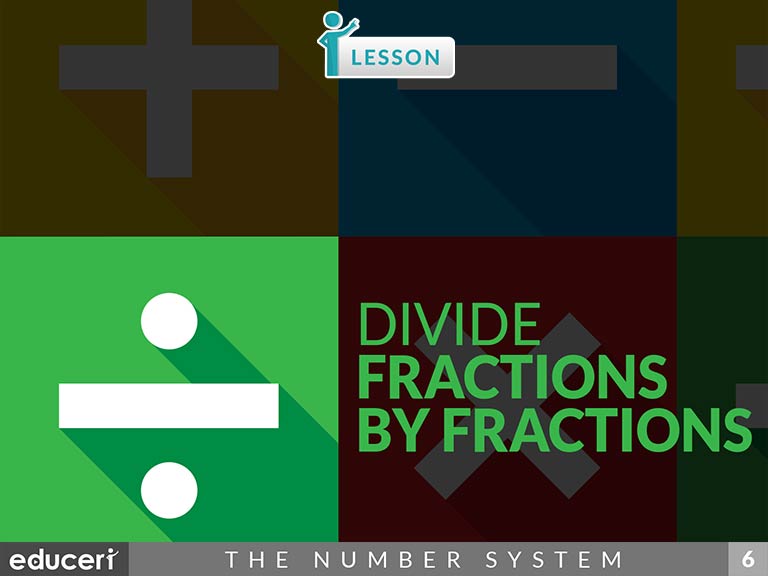
Divide Fractions by Fractions
(A) Recognize that dividing by a rational number and multiplying by its reciprocal result in equivalent values
6.3.B(B) Determine, with and without computation, whether a quantity is increased or decreased when multiplied by a fraction, including values greater than or less than one
6.3.E(E) Multiply and divide positive rational numbers fluently.
Share This Lesson
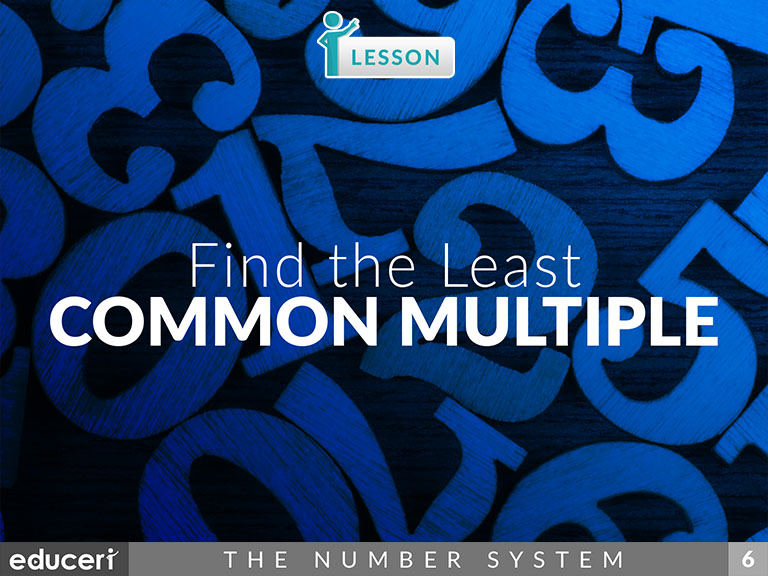
Find the Least Common Multiple
Share This Lesson
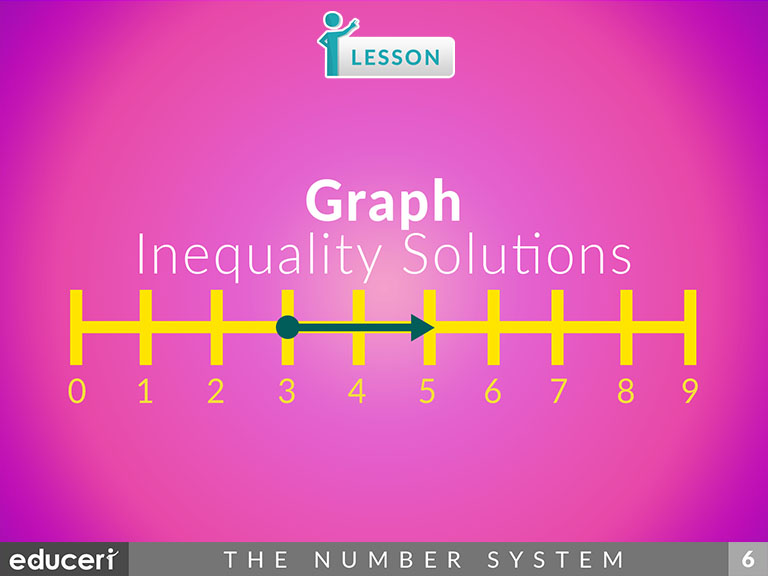
Graph Inequality Solutions
(B) Represent solutions for one-variable, one-step equations and inequalities on number lines
(Y10) Solve linear inequalities and graph their solutions on a number line (ACMNA236)
6.NS.7.A Interpret statements of inequality as statements about the relative position of two numbers on a number line diagram. For example, interpret -3 > -7 as a statement that -3 is located to the right of -7 on a number line oriented from left to right.
6.NS.7.B6.NS.7.B Write, interpret, and explain statements of order for rational numbers in real-world contexts. For example, write -3 oC > -7 oC to express the fact that -3 oC is warmer than -7 oC.
Share This Lesson
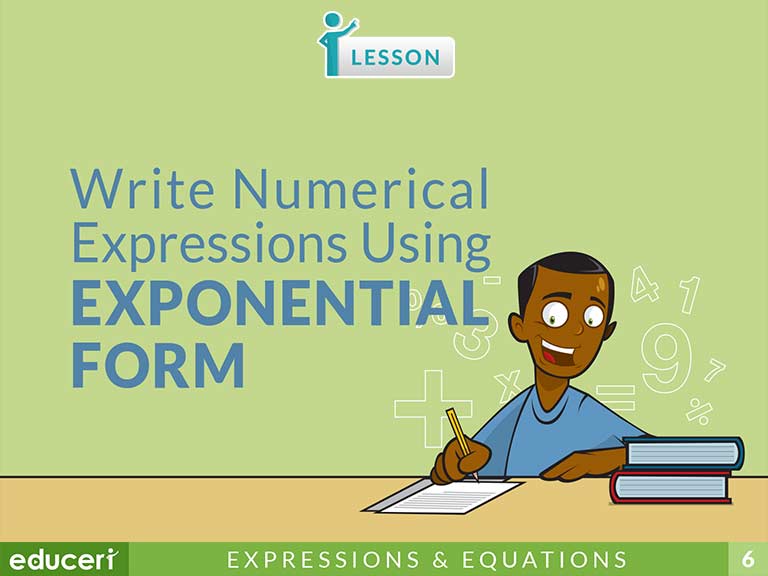
Write Numerical Expressions Using Exponential Form
This expressions and equations lesson teaches students how to write numerical expressions using exponential form. The lesson includes research-based strategies and strategic questions that prepare students for assessments. In this lesson, students will use the exponential form to represent different values. Students will also relate exponents to place value and develop other conceptual understandings of what exponents are. This lesson does not cover evaluating expressions with exponents.
Share This Lesson
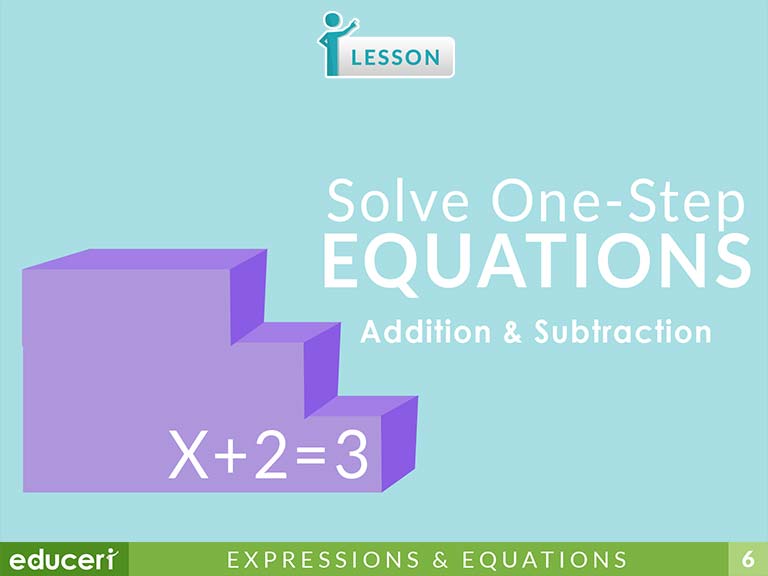
Solve One-Step Equations (Addition & Subtraction)
6.EE.5 Understand solving an equation or inequality as a process of answering a question: which values from a specified set, if any, make the equation or inequality true? Use substitution to determine whether a given number in a specified set makes an equation or inequality true.
6.EE.66.EE.6 Use variables to represent numbers and write expressions when solving a real-world or mathematical problem; understand that a variable can represent an unknown number, or, depending on the purpose at hand, any number in a specified set.
6.EE.76.EE.7 Solve real-world and mathematical problems by writing and solving equations of the form x + p = q and px = q for cases in which p, q and x are all nonnegative rational numbers.
This expressions and equations lesson teaches students how to solve one-step equations. The lesson includes research-based strategies and strategic questions that prepare students for assessments. In this lesson, students solve one-step equations with a variety of operations. The focus of this lesson is to solve one-step equations related to word problems.
Share This Lesson
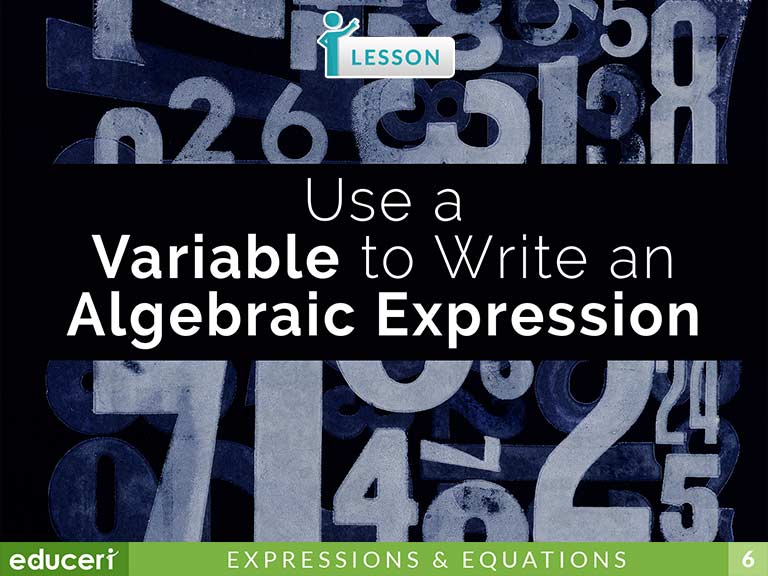
Use a Variable to Write an Algebraic Expression
This algebra and functions lesson focuses on using a variable to write an algebraic expression. The lesson includes research-based strategies and strategic questions that prepare students for assessments. In this lesson, students read the problem, identifying the unknown amount, the given number or known amount, and the operation (using clue words or actions such as sum, difference, product, or quotient). Then, they write the algebraic expression. In addition to the lesson, there are eight pages of Independent Practice and review with questions modeled after current adaptive testing items.
Share This Lesson
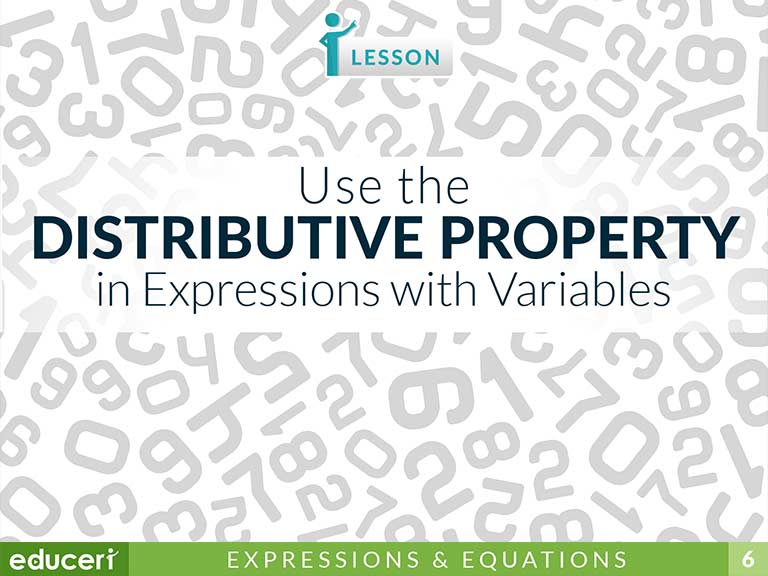
Use the Distributive Property in Expressions with Variables
This algebra and functions lesson focuses on using the distributive property in expressions with variables. The lesson includes research-based strategies and strategic questions that prepare students for assessments. In this lesson, students identify the factor and then multiply the factor outside the parentheses to each value inside the parentheses. In addition to the lesson, there are four pages of Independent Practice and review with questions modeled after current adaptive testing items and six flash cards.



